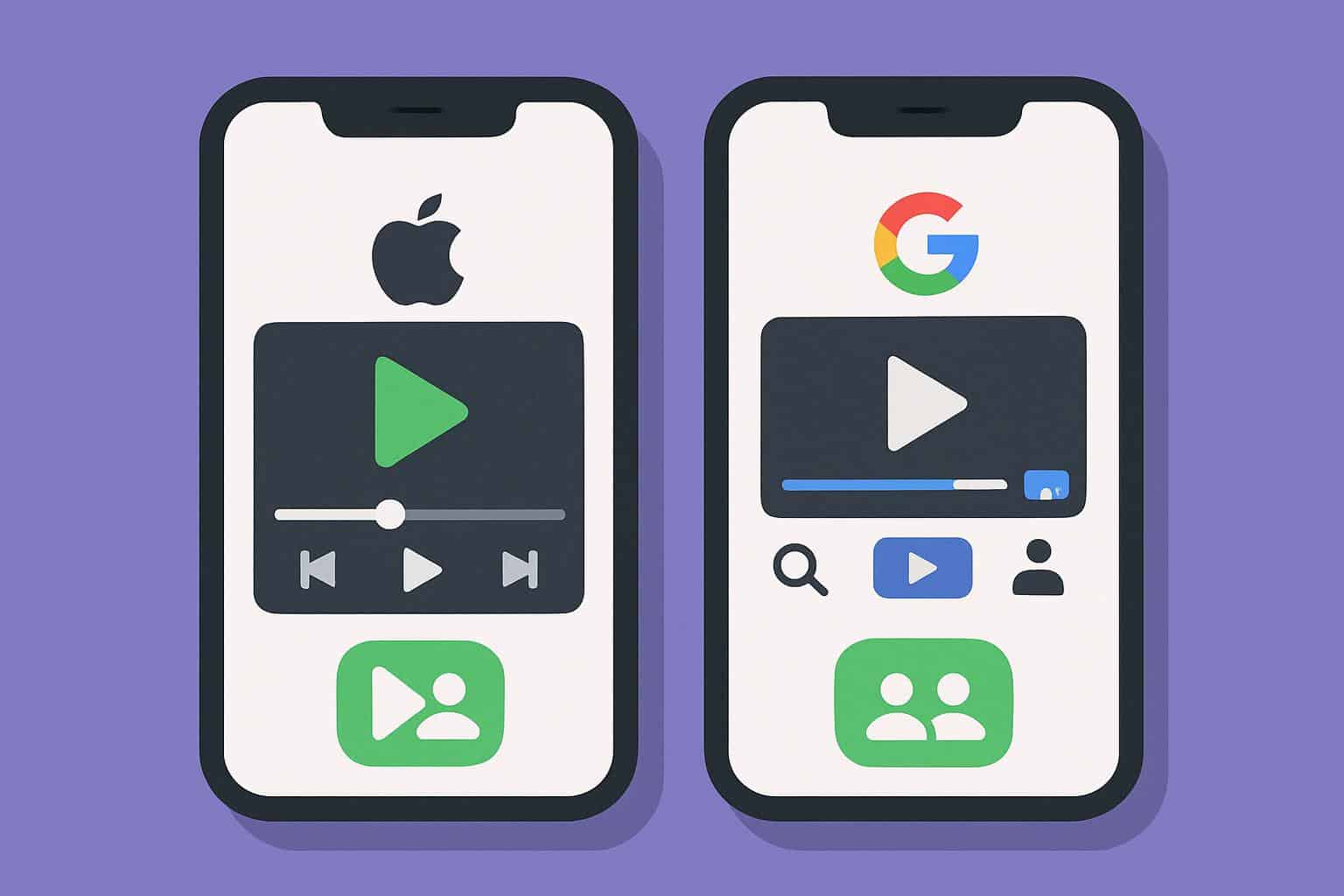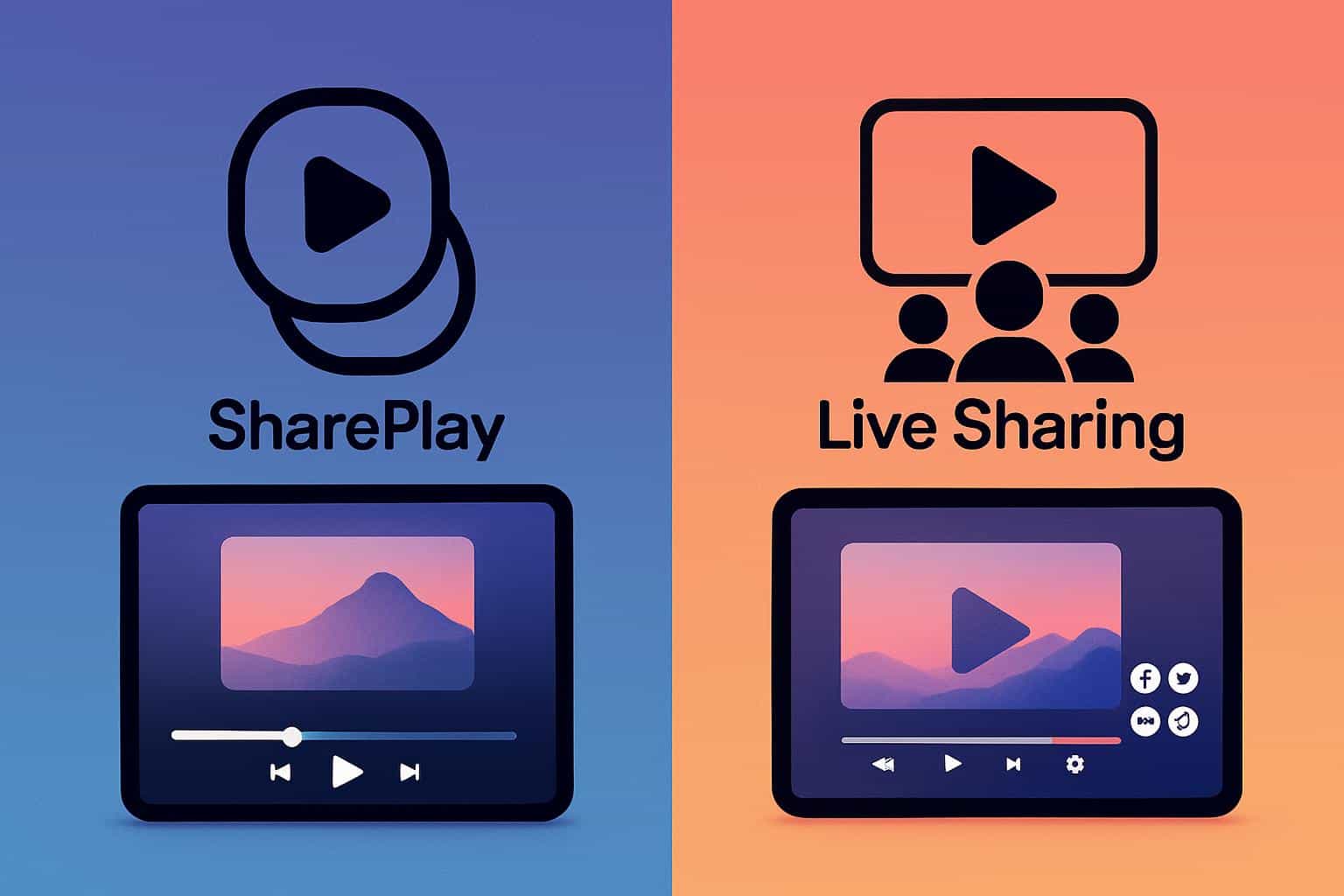After several calls with Apple’s SharePlay, I concluded the same thing after every one: This is what casual co‑watching and co‑listening should be like. So then I tested out Meet’s version, which is Google’s answer to that. The contrast is not subtle. One is largely invisible, effortless; the other feels like a public beta you’re tripping through.
SharePlay’s secret sauce is system-level sync and control polish
SharePlay isn’t just a button in FaceTime; it’s an OS‑level feature. Apple baked synchronization into the media stack, so play, pause, scrubbing and timecodes remain in lockstep for all. It’s also DRM‑compliant; everyone streaming their own feed bypasses what content owners like to label as piracy, and it avoids the janky artifacts of screen sharing (Self: raise your hand if you ached watching single-device local loops). Developers pull in the GroupActivities framework, so apps aren’t hacking their own sync logic. The upshot: low latency, predictable controls and sessions that don’t fall over when someone switches apps or gets a notification.
- SharePlay’s secret sauce is system-level sync and control polish
- Google’s Live Sharing does the basics no favors in Meet
- In real-world side-by-side use, SharePlay just works
- The ecosystem gap matters more than features on a spec sheet
- Why Apple’s approach feels polished across devices and apps
- How Google can bridge the gap with smarter, tighter integration
- The bottom line: one seamless experience, one still catching up

It feels almost too simple in practice. You get on a FaceTime call, open any of the supported apps like YouTube or Disney+, and a prompt for SharePlay appears. Accept, and here we all are watching the same thing with shared transport controls. Audio levels duck as they should, picture‑in‑picture works correctly, and if you throw the session onto an Apple TV box during a call, everyone jumps smoothly onto the big screen right away without any handshake delay. The amount of thought I have to put into things is practically zilch.
Google’s Live Sharing does the basics no favors in Meet
Google’s version resides within Meet under some Tools, listed as Live Sharing. On paper, it can play YouTube, Spotify and a small selection of simple games such as Heads Up! and Kahoot! In actuality, its discoverability and flow are the initial challenges. You begin a Meet call, tap through menus, encounter an explainer sheet and then jump out to the app, with fingers crossed that there’s a pop‑up box confirming the session. That pop‑up sometimes doesn’t show. Among other things, when it does work, you’re several taps deep before anything starts to play.
I’ve met the ugliest form of resistance: uncertainty. Will everyone on the call hear it? Is it just the same on other Android skins? Can someone return to a meeting in mid‑session without resetting everything? Those are table stakes for a feature designed to bring down the barrier to hanging out. If you’re carrying takeout and kept around waiting on a trailer breakdown with friends, the multi‑step search for Live Sharing is when your food goes cold.
In real-world side-by-side use, SharePlay just works
SharePlay makes that spontaneous “let’s watch this” during a FaceTime chat shared playback in seconds. You can all scrub, pause and react perfectly in sync. No one feels like the host, and no one is demoted to being a de facto spectator through screen share. And yet group dynamics stay natural because the tech recedes.
Live Sharing with Meet and the call is a tutorial. You tell everyone else where to tap, repeat steps when someone joins late and diagnose the approvals sheet that some people see but others don’t. Sometimes, that experience can do the trick but rarely does it blend entirely into the background — like great platform features tend to do.
The ecosystem gap matters more than features on a spec sheet
SharePlay’s support goes deep and wide: big video services like Disney+, Max, Prime Video and Paramount+; music apps including Apple Music and Spotify; education and productivity software; even fitness sessions that sync metrics while you talk. Apple elevates group sessions in its developer docs. Apple’s developer docs make group sessions a first‑class API, and that’s why you’ll see thoughtful integrations—such as shared annotations in document apps or instant handoff to Apple TV.
Meet’s catalog is more slender and leans toward YouTube plus a handful of partners. Then there’s fragmentation: watch‑together already exists in some Google surfaces as disparate experiences — YouTube has tried co‑watching, Messages has RCS reactions and casting lives with Chromecast — but those pieces don’t come together into a single predictable user journey. The irony here is that Google has even more endpoints to tap into, from its Android TVs to the Nest displays, but the connective tissue is not really there.

Why Apple’s approach feels polished across devices and apps
Apple has two platform choices that give it an advantage. First, SharePlay is permissioned and synchronized at the system level, not tacked onto individual apps. Second, rights management matches the way studios want to see their content delivered — every viewer authenticates with their own subscription — and cuts both legal and technical friction. “The general wisdom is, experiences that play by publisher rules get better app distribution,” industry analysts have observed for years. That alignment pays off here.
Scale also helps. Apple is said to have a base of devices in the billions, and FaceTime usage comes with daily routines. In the rare case that a feature does ship within that default behavior, adoption is universal — no download required, no new call app to convince your friends to check out.
How Google can bridge the gap with smarter, tighter integration
First, kill the scavenger hunt. Surface Live Sharing from the system media controls and Android’s share sheet, not hidden in Meet. When a user begins playing a video while in YouTube during a Meet call, the two apps should silently collaborate behind their backs instead of taking the user on a multi‑screen detour.
Second, deliver a unified Group Activities API for Android—synchronized playback, shared controls, identity handoff and graceful device switching—that is available to any developer and works consistently in Meet, Messages and YouTube. Consistency invites adoption.
Third, invest more in Google’s hardware advantages. Instantly switch groups to Chromecast or Android TV and keep the call going. You can always continue play sessions between phone, tablet and TV with no re‑auth. Also, make reliability boring: no prompts that mysteriously vanish, no “who’s hosting?” confusion and (on the DRM front) no dead ends.
Finally, expand the catalog beyond YouTube and a handful of games with the connective tissue and studio and music licensing deals that allow synchronized, per‑user streams. When developers get sight of a stable API and they see people who are going to use it, they ship integrations.
The bottom line: one seamless experience, one still catching up
SharePlay works because it resonates with how people already talk and watch together. Live Sharing from Google feels like a solution waiting for a platform. Until discoverability, reliability and ecosystem support catch up, one of these experiences is poised to keep the other looking unfinished.

